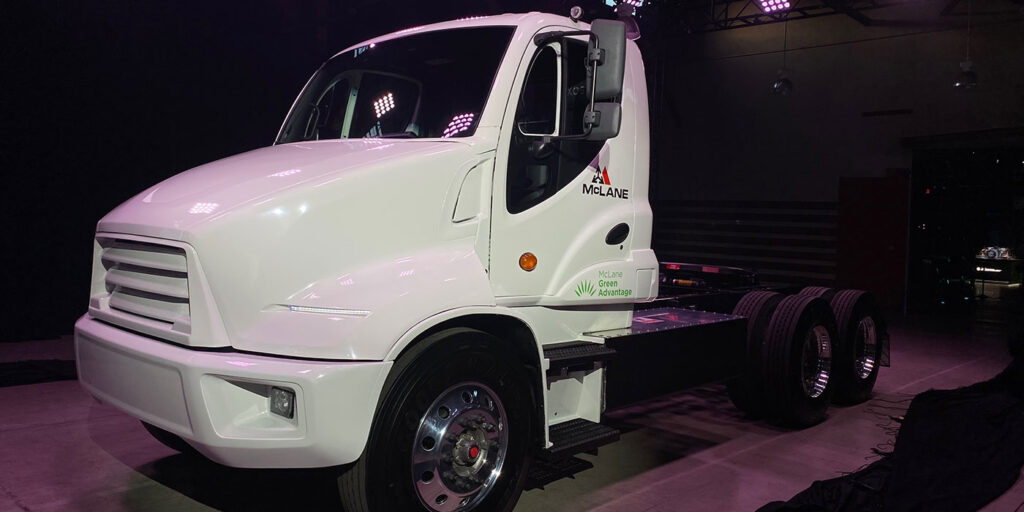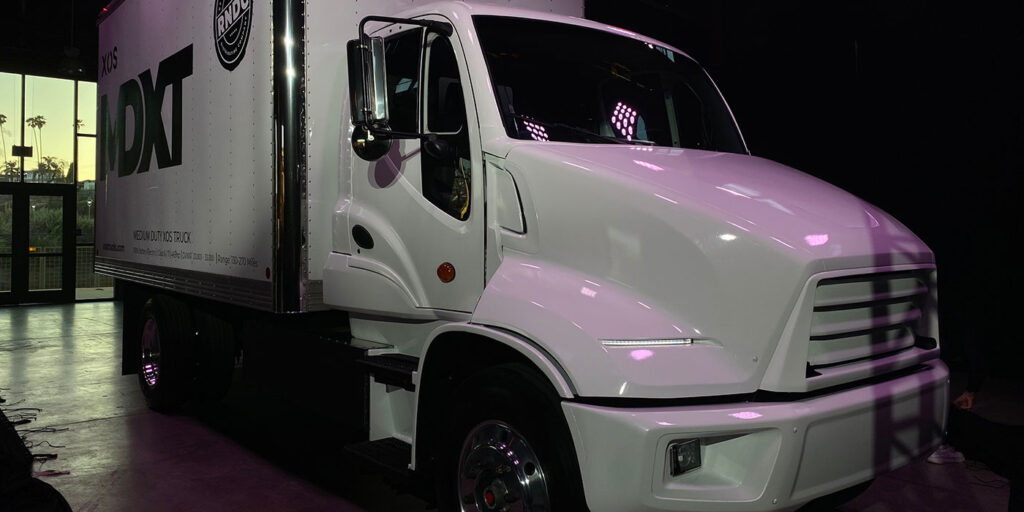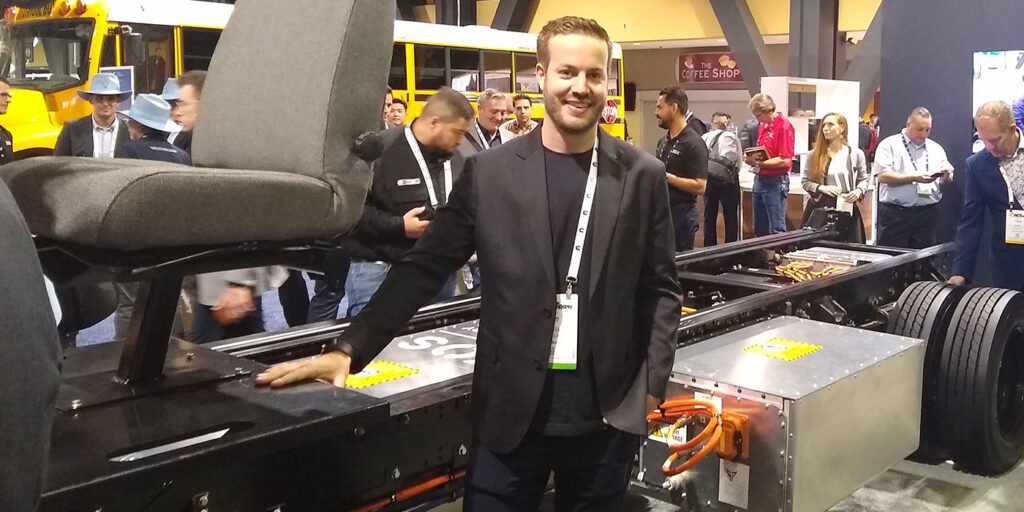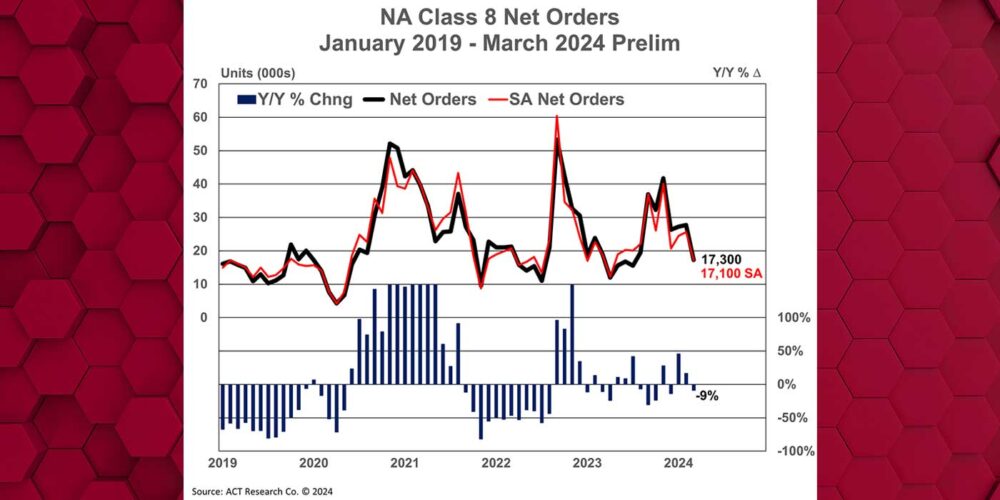The questions come fast and furious whenever a new nameplate enters the trucking market.
Where are you manufacturing your trucks?
What suppliers are you working with?
What pilot programs are in place?
Four years ago, when the first heavy-duty electric trucks were first introduced as a concept on flashbulb-lit stages, those questions could be sidestepped. Today, however, we know too much. Electric trucks have carved out a productive and profitable niche in specific range-bound applications and fleets are taking their first steps toward increasing sustainable equipment usage. In other words, today’s electric trucking world has expectations.
So how does Xos plan to meet those expectations as a commercial electric vehicle manufacturer bringing fully formed Class 8 and Class 6/7 options to the trucking market?
“We think of ourselves as more than just a manufacturer. We’re a fleet services provider. We help customers think through the whole electrified solution,” explained Dakota Semler, co-founder and CEO, Xos, Inc. “We want to manage that entire process from the day you need an electric truck to when you’re servicing and supporting it in the field. That’s important for us. If we deliver an electric truck and you don’t have charging infrastructure or you don’t have a service network, then that reflects on us. We want our customers to be successful because, ultimately, we have one chance to be successful with a customer.”
So let’s knock out those gate-keeper questions in rapid fashion.

Fleet Equipment: Where are you manufacturing your trucks?
Semler: “We have two locations–one in Eastern Tennessee, which is strategically located close to our supply base and near a lot of the body upfitters. The other location is in Monterey, Mexico, also strategically located to a big portion of our supply base.”
That’s for your Class 5/6 SV05 step van–will you be manufacturing your Classes 6/7 and Class 8 trucks there as well or do you have to expand?
“We’re expanding. We’re adding space at our Tennessee location where we’ll build those vehicles.”
And you’re manufacturing your own frame rails, chassis, the whole truck?
“Yes, we are manufacturing the frame rails, chassis, and battery packs and battery management systems for MDXT and HDXT.”
In the Class 8 arena, Xos will field its HDXT electric tractor aimed at regional-haul fleets, sporting a range of up to 230 miles on a single charge. It offers 36,583 ft-lbs of torque, along with a 56,000-lb. payload and 798 HP. The vehicle’s gross combined vehicle weight (GCWR), the maximum weight of a vehicle and its attached trailer, is 82,000 lbs.
Vocational applications such as refrigerated operations, flatbeds or a box truck delivery vehicle will be handled by the Class 6/7 Xos MDXT. The medium-duty electric vehicle can travel up to 270 miles on a single charge, sports 16,000 ft-lbs max torque and offers a GCWR of 23,000 to 33,000 lbs. The MDXT is available in a variety of body configurations, including a box truck, refrigerated unit, and flatbed.
One of the biggest feathers in the newcomer’s electric truck cap is Xos’s partnership with Allison Transmission, Inc. The well-known transmission brand name that has diversified into the electric axle business will supply its eGen Power e-Axle for Xos heavy-duty vehicles, in addition to supplying eGen Power 100S and 100D axles to Xos through 2022.
It’s gotta feel good having a supplier partner that is well established in the trucking market.
“They understand complex gearing systems better than anybody we’ve met,” Semler said. “When it came to selecting a partner, we wanted a company that understood the mechanics of electric powertrains and of the control systems. Partnering with a company that’s been doing that for decades–it gives us a lot of peace of mind and it gives the customers a lot of peace of mind when they hear that brand name.”
How did that relationship come about?
“We’ve actually worked with that team previously when it was AxleTech. Now, we’re working very closely with the Allison team, working through their engineering validation process together. And our partnership is not just a foundational partnership for us to be able to source axles from them, but also to do a lot of the validation to ensure our vehicles are capable of running for hundreds of thousands, and even over a million miles.”
With the Allison partnership as a foothold in trucking industry history, Xos sets its sights forward to take aim at proprietary battery pack building. Range is always at the top of electric truck talking points, and how the battery pack is created plays a huge role in the truck’s range capabilities.
The battery packs on electric vehicles are made up of smaller battery cells that are packaged together and integrated in a battery “pack.” There are half a dozen lithium-ion battery cell suppliers–a few with names you’d recognize like LG, Samsung and Panasonic; a few you probably wouldn’t like Contemporary Amperex Technology Co. (CATL) and SK Innovation; and one that regular visitors of Fleet Equipment would: BYD accounted for 87% of battery cells and battery metals in 2020. So it’s fair to wonder: With everyone sourcing from the same cell suppliers, how different can all these electric trucks actually be?

The answer: A lot.
“The cell is the fundamental building block of the battery, but how you integrate it and how you package it ultimately dictates the cell’s, the packs’ and system’s resiliency and longevity in the field,” Semler said. “When you think about a battery pack, the main thing that causes it to age or to lose energy capacity over time is heat. The thermal management system is the backbone of how long your battery can last. We design our own thermal management system with our own controls that we manage in our battery management software [BMS], which reports up to our master vehicle controller [VCU] and that’s where a lot of the secret sauce is.”
Tell me more about this secret sauce. What sets Xos apart from other sauces … er, battery packs?
“What I can tell you is that we wanted to be able to engineer for a commercial duty use case. You may see some other vehicles where it’s a conversion or a retrofit–that means they’re buying modules from a passenger car application, which is designed for an entirely different lifespan: 100,000 miles for the primary vehicle life, warranties starting at 50,000 miles, not a lot of vibration, monocoque chassis, fairly low unsprung weight, totally different requirements.
“When you look at a commercial chassis, standard medium-duty commercial vehicle warranties start around 150,000 to 200,000 miles, vehicles are used 15 to 20 years in some cases, and need to be built for that durability use-case. We focus on creating more structural rigidity. Durability is engineered into the battery module and the enclosure so that we’re less likely to have premature pack failure. We’re not see aging or warranty issues early in the life of the vehicles.”
What about after the sale? What does your service network look like?
“In areas where we already have support technicians, we provide service either ourselves or through a third-party service provider. In several locations where we don’t have coverage, we work with large dealer groups. We have an amazing partnership with one of the largest truck dealerships in the nation–Murphy-Hoffman Company (MHC). They’re supporting us in seven states and multiple cities within each of those states. Then we have several other partners that we’ve brought over the line as dealers Thompson, Yancey, to name a few. And we have a few more that we’re going to be announcing in the near future to make sure that as soon as we deliver a truck, it has service support from day one.”














